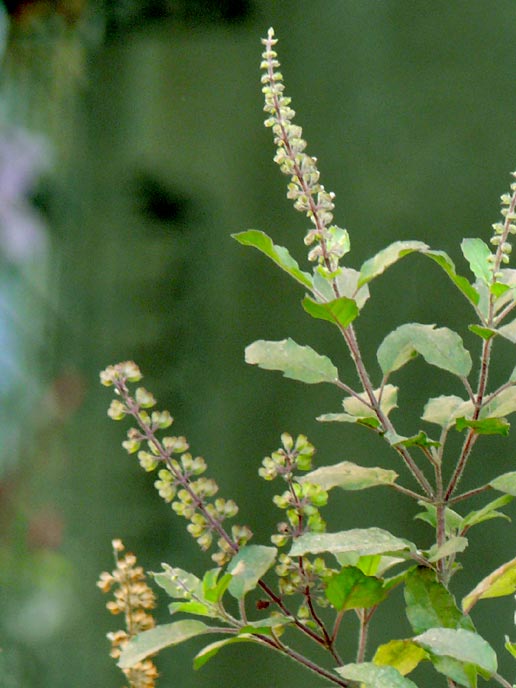I am happy to write this third article in continuation of the series ‘The Why of Indian Tradition’. Today the topic is ‘Tulsi’ plant. In India, Hindu religion has bestowed ‘Tulsi’, with the status of mother. Traditional Hindu families consider it auspicious to plant Tulsi in their homes. They worship it and take every care of it. Also known as ‘Sacred or Holy Basil’, Tulsi, has been recognized as a religious and spiritual devout in many parts of the world.
We, Indians have a special respect for Tulsi. We see this everyday in our family when our mother or grandmother worship Tulsi and offer water to it. This tradition is continuing since ages, we even do not know since when. However, one point is very clear, our brilliant Rishis (sages) knew the benefits of Tulsi and that is why they personified it as a Goddess and gave a clear message to the entire community that it needs to be taken care of by the people, literate or illiterate. Today, we do not do any harm to Tulsi and try to protect it because it is like Sanjeevani for the mankind.
Documented as something being used in many traditional ceremonies, Tulsi plant is thought to open the heart and mind and bestow love, compassion, faith and devotion. With such belief it has been widely used in religious rituals and ceremonies throughout the continents.
Today, inspite of the fact that the mankind has scaled the heights in medicine, the entire medical fraternity world over acknowledges the traditional and herbal characteristics of Tulsi. The properties of Tulsi, which the world has acknowledged today was known to Indians since ages. Tulsi has great medicinal properties. It is an awesome antibiotic and a healthy tea as well. Taking Tulsi everyday as tea or otherwise increases immunity and help the drinker prevent diseases, stabilize his or her health condition, balance his or her body system and most important of all, prolong his or her life. Keeping Tulsi plant at home prevents insects and mosquitoes from entering the house. It is said that snakes do not dare to go near the Tulsi. This was reason, in ancient times, people would grow lots of Tulsi near their house. Tulsi also produces great quantity of oxygen which is again most vital for the survival of mankind.
Today more and more people from different walks of life have included Tulsi tea drinking in their daily routines- giving them a more relaxed and refreshed feeling. This wonder plant has been highly classified as something that is indeed organic, botanical, naturally safe, healthy, flavorful, aromatic, relaxing and refreshing.
The properties of Tulsi, which the world has recognized after so much of scientific testing and research was known to us (Indians) for thousands of years. Our Rishis were indeed great—isn’t it?


